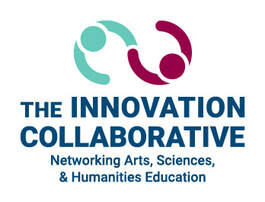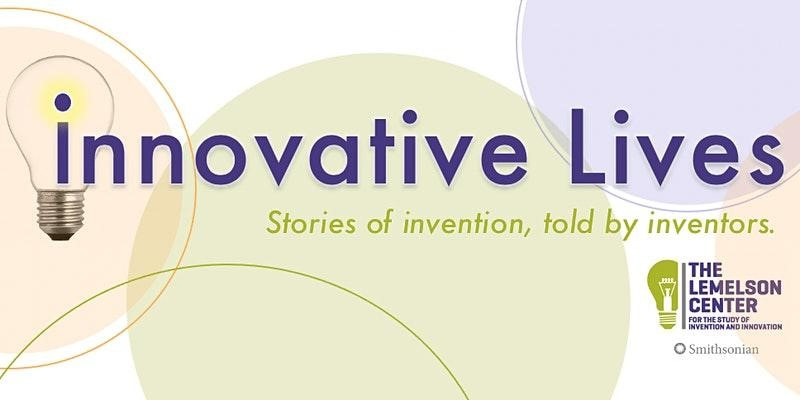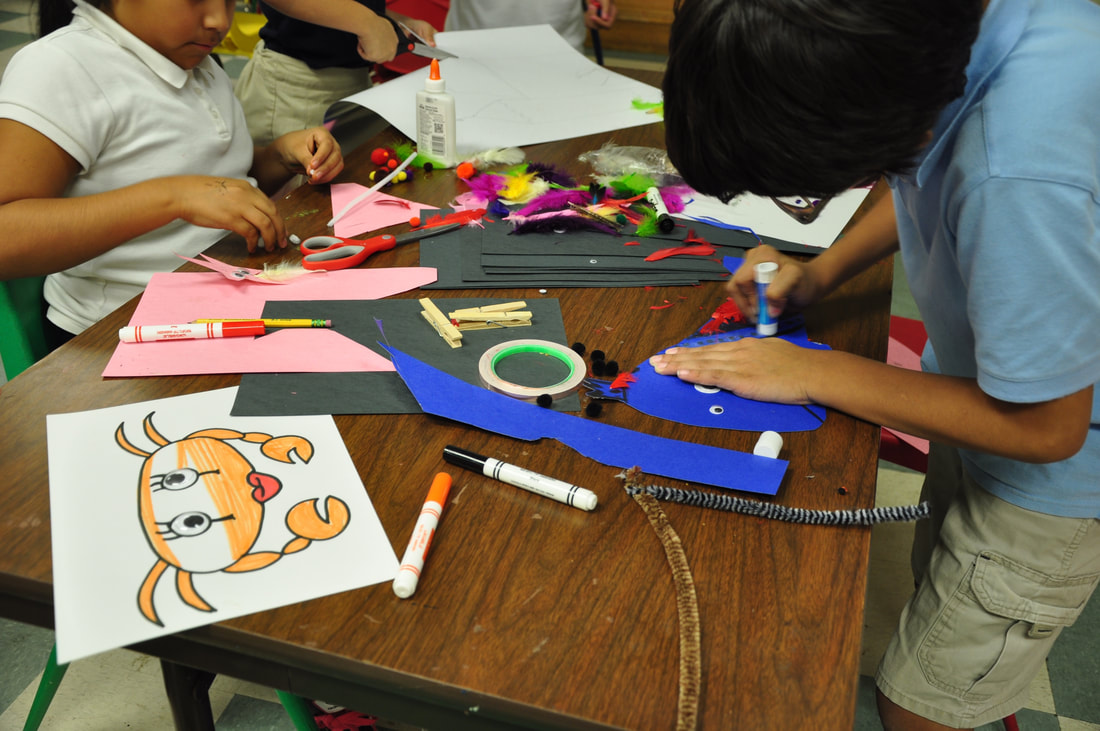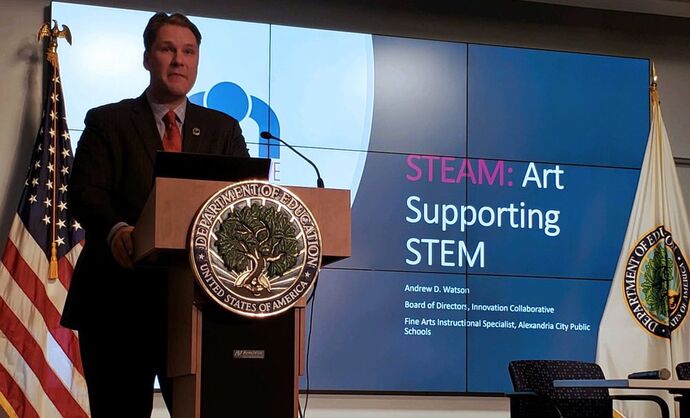 In its position as a national STEAM education trailblazer, the Innovation Collaborative has adopted its position on STEAM education. This position was thoughtfully developed by a team of Collaborative leaders representing arts, science, and humanities institutions, with continuous input by all Collaborative members across disciplines and learning settings. In this position statement, the Collaborative emphasizes the importance of equity, curiosity, and the application of competencies and practices across disciplines. These competencies and practices include, but are not limited to, fluency, originality, imagination, collaboration, problem-solving, risk-taking, and persistence. See Applying Research Thought Leader Wisdom article in this newsletter for more on applying creativity and innovation. The Collaborative’s STEAM position also emphasizes the importance of transdisciplinary learning. In this approach, boundaries are erased among disciplines, increasing learning in addition to cognitive and affective growth.
0 Comments
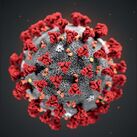 In the last newsletter we summarized just a few of the ways in which educators and guides have innovated to provide effective COVID learning environments when traditional methods were not possible. Over the past year, this process has progressed with additional thoughtful approaches and also research-based analyses of where we are and how we might move forward. Coping through Literature and the Arts More and more, thought leaders are looking beyond the current health crisis to plan for recovery. This includes not only economic and structural measures but also intense attention to psychological and emotional crises that the pandemic has caused. Increasingly, writers are recognizing the important role that literature and the arts have and must continue to play in this process. Here are just a few of the resources and articles that have appeared in the past few months: Trade Literature to Help Students Understand (Recommended by Angela Ding at Worlddreader.Org) The Unwelcome Stranger, by Drew Edwards & Diana Nawatene A grandfather advises children how to cope and be kind. I Love You, by Michael Ross Kwizera does not understand why she cannot be physically with her grandparents. Coronavirus: A Book for Children, by Elizabeth Jenner, Kate Wilson, Nia Roberts, & Axel Scheffler This non-fiction book answers questions children might have about the coronavirus. Hello, My Name is Coronavirus, by Manuela Molina Cruz An informative book narrated by the virus, itself. My Hero Is You, by Helen Patuck Sarah is upset because she cannot go to school. She feels unsafe. An imaginary dragon gives her comfort. The Virus-Stopping Champion by, Hilary Rogers A short story convinces children that they, too, can be champions. Read more at https://www.worldreader.org/now/6-books-to-help-your-children-understand-the-coronavirus/ Poetry for the Pandemic And the People Stayed Home (Family Book, Coronavirus Kids Book, Nature Book), by Kitty O'Meara A beautifully-illustrated poem that reflects the angst of in today’s world. Arts for an Anxious World - and More
How Art Helps Us Make Sense of COVID 19’s Incredible Toll. (from National Geographic) Contributed by Collaborative Innovation Fellow Julie Olson In a field outside of JFK Memorial Stadium in Washington, DC, artist Susan Brennan Firstenberg’s art helps Americans visualize our shared grief—a flag for every one of our COVID deaths. People come and help, praying and giving physical manifestation to what we are all experiencing. That is one of many memorials that have bloomed across the country. Another is by a thirteen-year old student in Sherman Oaks, California, who is spearheading the creation of a quilt. Eventually, all panels of this quilt will be assembled. Like these exhibits, other art installations throughout the country are addressing the country’s shared COVID experiences. https://www.nationalgeographic.com/history/2020/11/how-art-helps-make-sense-covid-19-incomprehensible-toll/ Our Kids Need Arts Education More than Ever: Here’s What’s Lost Without It (from Time) Frank Gehry calls on President Biden to empower school-age children to help heal themselves by restoring arts education because the arts…(help them) express and channel their emotions…and find their spirit’s song. He urges this emphasis on the arts so that children have the creative powers necessary to solve the problems we are leaving behind. https://www.msn.com/en-us/news/us/our-kids-need-arts-education-now-more-than-ever-heres-what-is-lost-without-it/ar-BB1c6Q9j?ocid=msedgdhp/ From the National Academies of Sciences, Engineering, and Medicine Teaching K-12 Science and Engineering During a Crisis The COVID-19 pandemic is resulting in widespread and ongoing changes to how the K–12 education system functions, including disruptions to science teaching and learning environments. This report describes high-quality instruction today, with tips for administrators, teachers and others. It emphasizes quality and equity, giving advice for managing and monitoring instruction. The free publication is available for download from the National Academies. https://www.nap.edu/resource/25909/interactive/?fbclid=IwAR0cufKezzb_-cCrlbi4skWinZk5SXkD2VQRlFV2zWdxZ86y-6qw8sy-xTw#.X3ZJmWof3RA.facebook And for lightness and pure joy… Pre-K Teacher Goes Viral After Sharing Virtual Classroom Dance Parties: “It’s About Bringing That Joy Factor” Azel Prather, Jr., went viral when he shared his virtual pre-school dance party on YouTube. Pre-pandemic, Prather taught preschool at Kipp DC Arts and Technology Academy in Washington, DC. He has long recognized those children who were “dancing in their seats” when they were supposed to be learning sight words. Dance was part of the program then and it is now, through Instagram and other social media tools. https://www.yahoo.com/lifestyle/pre-k-teacher-goes-viral-after-sharing-virtualclassroom-dance-parties-its-about-bringing-that-joy-factor-165553012.html The approaches above are different, but the message is clear. Moving forward, education will never be the same.  The Educational Theatre Association’s (EdTA) August survey, “The Impact of COVID-19 on Theatre Education,” has confirmed the profound effect of the pandemic on school theatre throughout the United States, leaving many programs at significant risk in the coming years. The survey queried more than 11,000 middle and high school theatre educators about the status of their programs in the pandemic environment. Nearly 2,400 teachers responded, offering a snapshot of how COVID-19 has reshaped both their teaching methods and student learning opportunities. Analysis shows programs have suffered substantial revenue losses, with 91% of schools forced to cancel performances in spring 2020. For many programs, ticket revenue provides the main source of funding, as 44% receive no financial support from their districts. Money lost to investments in canceled productions coupled with lack of spring ticket sales created a ripple effect on current season budgets. In fact, 22% of programs faced cuts for the 2020-21 academic year. Many survey respondents reported 2019-20 revenue losses that were substantially more than they earned, and it is likely the economic downturn will limit other funding support this school year and beyond. For teachers, the impact raises short-term concerns about student recruitment, morale, and motivation as well as longer-term uncertainty about reductions in program capacity, external funding, and student opportunities. According to James Palmarini, Collaborative Advisory Council member and EdTA policy and advocacy advisor, the cancellations and lost revenue numbers were not unexpected, but still troubling. “We knew many theatre programs had to cancel their shows in the spring, but the numbers regarding those lost productions and revenue are still very sobering,” he said. Palmarini added there was hope from respondents for the current school year, with 59% answering “maybe” and 19% “yes” to a question regarding whether they thought they would produce a live show in 2020 or 2021, and 97% indicating they were returning to their positions in fall 2020. Seventy-five percent of educators stated they were starting the school year entirely virtually or in a hybrid model. The data on how they are adapting to the virtual environment suggests a broad range of strategies, with no predominant mode for reaching students. In the spring of 2020, the most frequently realized instructional strategies were virtual lessons taught asynchronously and available on-demand; project-based lessons spanning multiple class periods; instructional videos or digital games; and digital versions of lesson packets with worksheets. EdTA will conduct a follow up survey in the Summer of 2021. For a comprehensive summary of the survey results visit the EdTA Rapid Response Advocacy Center. 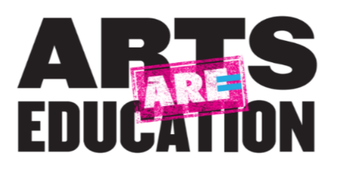 The National Coalition for Core Arts Standards (NCCAS) has launched Arts ARE Education, a national campaign encouraging school districts to continue to fund and support K-12 arts education programs in the 2021-22 school year. Given expected state and district budget cuts, calls for remedial education in tested subject areas, and the continued need for PPE equipment, NCCAS expects that arts programs across all disciplines will be at risk. The campaign asks advocates of all ages to take these action steps through its website:
He added that the campaign is also mindful that students of color in high poverty districts are most likely to lose arts education access, given the limited resources the districts will have to continue with arts programs. “I think the Arts ARE Education campaign offers theatre education (and all arts education) advocates a great opportunity to raise their voices in a very grassroots way that can make a real difference for our students and the fields of theatre and all arts education.” The Smithsonian has announced the 2021 Innovative Lives series. Over the past 25 years, the Institution’s Lemelson Center has hosted the Innovative Lives program series featuring more than 85 inventors, innovators, and entrepreneurs. Attendees can participate in informal chats. This year, Lemelson programs focus on diversity and inclusion in the invention ecosystem. The webinars in the series are open for free registration. Below are upcoming events. March 10: Growing Up with an Inventor and Sharing their Story through Film will feature documentary filmmakers Rob Lemelson and Cindy Yoon sharing stories and film clips from documentaries about their famous inventor-fathers.
April 14: Marilyn Hamilton, co-inventor of the Quickie Wheelchair, will speak with NMAH (National Museum of American History) curator Katherine Ott about her life as an athlete and inventor. May 12: Sarah Will, Paralympic skier and accessibility advocate, and Mike Schultz, inventor of the Moto Knee and Versa Foot, will come together to talk with NMAH sports curator Jane Rogers about their respective careers. Register for Growing Up with an Inventor  Rob Horowitz, Ed.D. Executive Director, ArtsResearch and Associate Director, Center for Arts Education Research, Teachers College, Columbia University. He is known for his arts education research that demonstrates the important relationships between in-school arts learning and cognitive, social, and personal competencies. The Collaborative’s Research Thought Leaders help provide the strong foundation upon which the Collaborative’s work rests. Each Thought Leader is nationally and internationally recognized in his/her own field and brings an extensive depth of experience and expertise. They also are adept at working across disciplines. A Thought Leader is featured in each Collaborative newsletter. In this issue, we visit with Rob Horowitz, Ed.D., whose expertise and research in arts education helps inform the work of the Collaborative. In a conversation with Collaborative Executive Director Lucinda Presley, Rob talked about his work and its relationship to the Collaborative. Tell us about your career. I was originally a working musician, but was always interested in education. I had three major educational experiences that helped prepare me for my work. In my first experience, I became a teacher in New York City. Because I wanted to make a difference, I taught music, computer science, social studies, and a lot of other things at an alternative high school for students who had dropped out or been suspended. I became the tech coordinator for the school. I helped these students get their alternative degrees. I helped a lot of students, but there were also were a lot of challenges. In that job, I learned a lot about education, city politics, and how schools work. It was an enormously educational experience for me. I had an undergraduate degree in music and history, so, while I was teaching at the alternative school, I went to Teachers College at Columbia for a master’s degree in music education. I liked it so much, I stayed for another master’s in music ed. and then a doctorate in music ed. My dissertation was on assessment of jazz improvisation. I ended up leaving the teaching job and concentrating on those degrees. I loved research. When I graduated, I ended up, in the 1990s, working for ArtsVision, a consulting firm based in New York City that did work all over the U.S. In this, my second educational experience, I helped ArtsVision with evaluation and assessment projects and curriculum and program development. We worked to re-energize arts education in New York City, which had been in decline for a number of years. The project resulted in a $36 million grant for NYC arts education, with $12 million provided by the Annenberg Foundation. For me, this was one of my main educational experiences because I learned about public policy, foundations, cultural groups, and their relationship to school systems. I also learned about how partnerships and collaboration work from all perspectives – from the funding to the teaching/practitioner side. Our work became the catalyst for New York City school districts to start emphasizing arts education once again. Tell us about your research. The Center for Arts Education Research at Teachers College, Columbia was awarded a grant from the MacArthur Foundation and GE Fund to study transfer, or how the arts can influence other kinds of learning. It was the largest study in a monograph, Champions of Change, that was published by the President’s Committee on the Arts and Humanities. Champions of Change has been widely distributed, and still has a strong internet life. Our study was called “Learning in and Through the Arts” (LIATA). My full-time job to manage that grant for a few years was my third major educational experience. I learned how to manage a large grant, how to think about transfer, and how the arts might influence other spheres of learning. The transfer model that we worked on and the ways of thinking about it has influenced my work ever since. (For more information on this transfer study, see the article “Transfer between Disciplines: A New Perspective” in this newsletter.) We developed a model which helped show that there are ways of thinking, feeling, and doing – competencies – that are unique to the arts and that also are applicable to other areas. Our model identified cognitive, social, and personal competencies and dispositions that are inherent to the arts and also applicable in other domains, that may provide the pathways to transfer. The model has been consistent with other models with some overlapping categories, such as Hetland and Winner’s Studio Habits of Mind at Project Zero, aspects of 21st Century Skills and CASEL’s Social-Emotional Learning Competencies. The consistency is encouraging and indicates we are collectively on our way to better understanding how the arts influence human development. Mary Hafeli, who worked on that project with me, and I were recently funded by the National Endowment for the Arts to reopen some of the LIATA data and do a secondary analysis. We found strong relationships between elaborative thinking skills and visual arts and drama. We also found that the outcomes we described in LIATA were strongest when there was effective collaboration between classroom teachers and arts specialists. What have you discovered in your research that points to the importance of the Collaborative’s work? From my standpoint, we can look at some of these areas we identified in LIATA and see whether or not they are applied in other areas. For instance, it is interesting to observe how creativity, imagination, and the willingness to express oneself are applied in the STEM world. All the things we found in our LIATA transfer study can be carried through to other areas. It’s important to look at how those competencies learned in the arts are reapplied in other areas – or vice versa. That is what the Collaborative is doing with its rubrics and and thinking skills – looking at transfer across disciplines. How do you think the Collaborative is moving the arts and arts education fields forward? Certainly we need this type of work across disciplines where we all learn from each other, where we can delve into these bigger questions, and where we engage in those questions of ways of thinking, ways of doing, and how these interact across subjects. This is so important. It’s important, too, that the Collaboratve is returning us to that, moving us out of our silos so that educators can think about those relationships. The arts very much needs this to help the arts teachers come out of their classrooms and interact with other teachers, for it’s important for them to be a part of their communities. What steps need to be taken in the future for K-12, out-of-school, and higher education to provide a firm foundation for the STEAM movement? This is a big question. I’m coming at this from the arts, and I know other Thought Leaders are coming at it from other disciplines. But, from my perspective, when talking about STEAM, we want to make sure that the arts experience has integrity as an arts experience. In other words, children are engaging in artistic thinking as part of the STEAM project, and I think the Collaborative has done a great job with that. There’s also expression, representation, and those cognitive, social, and personal areas that are part of the experience. To be STEAM, it must have some form of visual or performing arts in order to access the important arts competencies. How do you see the Thought Leaders and the Collaborative benefitting from their work together? Talking to people from different disciplines with different approaches is just amazing. The conversations we’ve had in our Thought Leader meetings and in our Collaborative meetings are some of the best conversations I’ve had in the last couple of years. This gives me a chance to really hear and explore things I might not have thought about, such as how someone is going to learn science or what that experience is like. This reflects on all our work and it’s one of the reasons I liked working on the LIATA project so much. We are all so focused on finishing whatever we are working on that we often don’t have the chance to step back and take a look at what it all means – why are we doing this and how we think about things more broadly. We are all so focused on the practical, but here, in the Collaborative, we also are thinking conceptually, and it’s very stimulating. It’s also really rewarding being a Thought Leader because in these rich conversations with Thought Leaders in other disciplines, such as science education and neuroscience, we are thinking about similar issues but from different points of view. I feel that there’s a consensus that the kind of transfer we are talking about, which is very hard to capture statistically, is conceptually what we all do in a way. We all learn in one context and apply that learning in another context – that’s what life and learning is. It’s not about subject to subject, say art to STEM, though there is some of that. Instead, it’s a way of thinking about things, say, about imagination and creativity. Since our subjects do get siloed in schools, this is helping because children work across those connections, integrating artistic thinking and STEM thinking. Do you have any other thoughts you’d like to share? I’ve been thinking a lot about the situations we are in because of COVID. As children go back to school, the arts are more important than ever because they bring a sense of community to the school. They also create a sense of identity and a way for children to relate to each other in multifacted ways. Though it’s tough times and children need to learn the basic skills and not fall behind, they also need to be able to feel, to express and make connections, and this is where the arts are so important in developing those cognitive, social, and personal skills. We must be vigilant to make sure that the arts and these skills are kept in place. This is not just arts for the arts’ own sake, as important as that is; it’s because these competencies that the arts engender benefit so many other areas central to their development. The arts content is the pathway for the development of these important competencies. It’s these competencies that enrich children’s lives for years to come. Resources that address Dr. Horowitz’ research: Learning In and Through the Arts – Champions of Change NEA Secondary Analysis of Learning In and Through the Arts Critical Links What You See Is What You Get: The Development of an Observation Strategy, VSA, Contours of Inclusion English Language Acquisition Through Dance and Theater: Impact and Pathways Connections: The Arts and Cognitive, Social, and Personal Development, in Partnering Arts Education: A Working Model from ArtsConnection, Dana Foundation 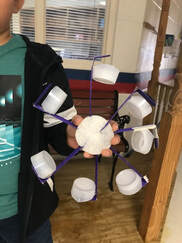 Transfer, in the education world, is where competencies, skills, practices, processes, and/or content from one discipline can be applied to another discipline or context. It is an important issue to consider as we work to give today’s students vital creative (novel idea) and innovative (applying the novel idea) thinking skills for academic success and strong workforce preparation. The concept of mutual transfer among disciplines underpins the Collaborative’s goals of promoting creative and innovative thinking for K-12 and out-of-school-time students by focusing on disciplinary practices, processes, and competencies as students learn the required content. The Collaborative’s arts Research Thought Leader, Rob Horowitz, Ed.D. (See “Meet Research Thought Leader” article in this newsletter.) has done significant research on the concept of transfer, having explored this concept for over 20 years. He and his colleagues have developed a strong transfer model that has received significant recognition, including its dissemination by Arts Education Partnership (AEP), the national arts organization that supports arts practice through research and policy. This model is found in Dr. Horowitz’ work, “Learning in and Through the Arts: The Question of Transfer” (https://scinapse.io/papers/2119313428 and https://www.aep-arts.org/wp-content/uploads/Champions-of-Change_The-Impact-of-Arts-on-Learning.pdf). It looks at the issue of transfer more broadly and deeply than before. It points to competencies acquired in arts learning that are applicable in other subjects and to life in general. The arts content and skills, Dr. Horowitz says, though important in their own rights, can provide these pathways for transfer. The compentencies in this transfer model are cognitive development, social development, and personal development. Cognitive competencies include creative thinking skills such as fluency, originality, imagination, and elaboration, in addition to focused perception. These, then, facilitate the ability to change perspectives, express ideas, and create meaning. The social/emotional competencies include the abilties to collaborate, communicate, and empathize. The personal, or affective, learning competencies include risk-taking, persistence, self-confidence, and the student’s ownership of his/her learning. All of these, he points out, can be carried over to other disciplines and contexts. As examples of this transfer in action, he points to the long history of science where famous scientists worked across disciplines. This includes the naturalist John James Audubon, who used art as a way to understand and record his scientific observations of birds, and Leonardo daVinci, who used art to understand scientific phenomena, including dissections of the human anatomy, and to conceptualize his engineering designs. These men transferred art skills and competencies into scientific fields to promote their own understanding and to communicate meaning. As important as the transfer of arts competencies to other disciplines is, he says, it is important to note that transfer of practices or competencies also can be conveyed from other disciplines to the arts. His study on transfer went beyond the concepts from the 1980s and 1990s that saw transfer as unidirectional from the arts to enhance learning in other subjects, such as arts enhancing test scores. It noted that skills engendered in other disciplines, such as creativity and critical and divergent thinking, can transfer back to enhance arts learning. This can be promoted, he points out, by shared ways of thinking between disciplines so that transfer then could be multidirectional, interactive, and dynamic. The implications from this research, he points out, resonate strongly with the Collborative’s work. The Collaborative’s research has documented the importance of transdisciplinary learning where students integrate different disciplines’ practices, competencies, and content interdependently and simultaneously, seeing that one discipline cannot complete the task without the other. This, in turn, contributes to a deeper understanding of each discipline to achieve an overarching synthesis. This synthesis can help solve problems, explain phenomena, create a product, and more. “It’s important that educators think about these relationships and move out of our silos,” he points out, to provide our students even richer and more valuable educational opportunities. An example of this transdisciplinary learning where different disciplines’ practices, competencies, and content are multidirectional, interactive, and dynamic occurred with 95 second grade underserved rural students (see image). They were given the problem of using the Elements of Art to invent a 3D wheel that could navigate Mars’ sandy and rocky surface. Through initial hands-on experiences integrating both disciplines, they combined their grade-level science concepts of texture, mass, rolling, and spinning with art concepts of line, shape, texture, and form (related to mass). They also integrated disciplinary practices such as (science) observing, asking questions, experimenting, developing a solution, testing, evaluating, using data to develop a conclusion, and (art) creating, presenting, responding, and connecting. They then used these science and art concepts to design and make their invention and write a team presentation that would show how well their invention solved the problem. One two-person student team creatively thought of their wheel having feet with magnets on them to “stick” to Mars’s magnetic soil that is high in iron oxide. They also added scoops to the wheel to scoop up the soil to test it. In their experiences, they didn’t separate the disciplines’ concepts and practices by thinking “I’m doing art now” or “I’m doing science now”. Their inventing process transcended each of the disciplines, driven by a strong synthesis that was richer than each individual discipline and that solved their problem, like in a real-world scenario. In the process, the students used many of the cognitive, social, and personal competencies outlined in Dr. Horowitz’ model. Assessments showed strong student integration skills and understanding of content. An increase in creative thinking was evident in 89% of the students. In addition, 100% of the teachers believed these experiences developed students’ critical thinking skills. One teacher said, “This enhanced my students because the kids got to use their own creative thinking and it brought them joy and they found a purpose they’ve never had before”. This is evidence of an important takeaway from Dr. Horowitz’ study on transfer. He emphasizes that, while it is important that competencies engendered by arts learning can transfer from the arts to other subjects, it also is important to understand that important competencies used in a variety of other disciplines and can transfer back to the arts, and then go back and forth, with no one discipline having priority over another. This way, the strength of each discipline can flow to enhance other disciplines, and, ultimately, students’ learning and thinking for the present and for their futures. 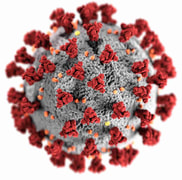 Collaborative member national education institutions have risen to the challenge to help their stakeholders adapt to the current COVID challenges. We asked representatives from these institutions to give us the top 3 strategies that their institutions are using to effectively address COVID for their stakeholders. Below are impressive strategies that these institutions are using. These strategies can benefit the entire STEAM field. Crayola Cheri Sterman, Director of Education At Crayola Education we are meeting teachers where they are and bringing a message of new opportunities to the discussions.
Dramatic Results Christi Wilkins, Executive Director We are transforming our delivery to engage with our students/families/collaborators by:
Educational Theatre Association Jim Palmarini, Director of Educational Policy, Reimagined the student-driven International Thespian Festival (ITF) and the annual EdTA Conference for teachers as virtual events (2,000+ attendees for ITF-V and 900+ for Conference)
International Technology and Engineering Educators Association Steve Barbato, Executive Director
National Association of Gifted Children Bess Wilson, Immediate Past Research Network Chair; Assistant Professor, Department of Foundations and Secondary Education, University of North Florida
National Dance Educators Association Susan McGreevy, Executive Director
National Science Teachers Association Tricia Shelton, Director of Professional Learning and Standards Implementation
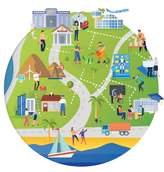 By Christi Wilkins, Collaborative member and Executive Director of Dramatic Results The Collaborative’s spring, 2020 newsletter included information about the Dramatic Results™ panel presentation at the Arts Education Partnership’s Annual Convening (fall, 2019) titled Systemically STEAM: Tips for Forming a STEAM Ecosystems. Dramatic Results also presented at the 2020 SLECoP Virtual Convening (October, 2020). In this session, titled Resilience and Resolve – The Power of Thriving STEAM Learning Ecosystems, presenters shared their successes and failures in integrating the arts with STEM through a cultural/psycho-social framework. The session documented Dramatic Results’™ work when its own resilience and resolve were put to the test this past spring. As schools across the world adjusted to the current global health crisis, the agency swiftly pivoted its in-person operations within four weeks, replacing all in-person programs with live, virtual STEAM programs using Zoom. As a direct result of their investment in cross-sector dissemination and community-building efforts, they have expanded their original 7-member local STEAM Ecosystem (including: U.S. Sailing Center; Long Beach Public Library; Historical Society of Long Beach; Growing Experience; an urban farm located on the grounds of a housing project; engineers from Boeing and Northrop Grumman; a Bravo TV chef; and The Social Justice Sewing Academy) into a regional and national collaboration with Cooper Hewitt Smithsonian Museum of Design, a digital artist from Fab Labs, a neuroscientist from Duke University’s TIP Program, Start Science, and ReDiscover. By leveraging its growing STEAM Ecosystem, Dramatic Results™ has been able to offer engaging online classes on topics that include cyborg prototyping, genetics of “dragon breeding,” design thinking in healthcare, video game design, photography, movie-making, and mixed media art. Students responded to the new format almost immediately, with consistent levels of engagement, especially through the site’s chat. Dramatic Results™ is further expanding its STEAM Ecosystem reach to serve Calvert County Public Schools (CCPS) in Maryland, a rural community with few resources. This fall, CCPS will serve its first virtual STEAM cohort, which will provide under-resourced gifted girls across six middle schools an after-school “hands-on” live virtual STEAM program. You can learn more about Dramatic Results™ and how to start building a STEAM Ecosystem in your community. Download a FREE copy of the Dramatic Results™ STEAM Mapping Tool™ here. 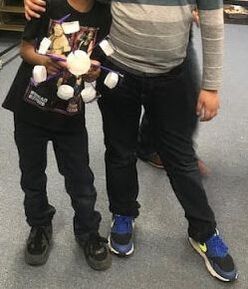 By: Jonathan Katz, Collaborative Strategic Planning Committee Chair and Collaborative Strategic Advisor Mission The Innovation Collaborative is a national transdisciplinary¹ forum to foster creativity,² innovation,³ and equity⁴ in teaching and learning. Purpose The Innovation Collaborative provides information about how effective intersections of the arts, sciences, humanities, engineering, math, and technology (STEAM) can reinforce innovative thinking. To that end, it identifies, conducts, and disseminates research. By supporting teaching and lifelong learning, the Collaborative encourages networking and collaboration across disciplines, institutions, and individuals in both in-school (formal) and out-of-school (informal) settings and the intersections of the two. Vision We envision a diverse, equitable, and inclusive society where:
Goal 1: Improving Practice To promote and share research about the many ways that the intersections of the arts, sciences, humanities, engineering, math, and technology (STEAM) promote creative and innovative thinking in all audiences and demographics
Goal 2: Collaboration To create equitable opportunities for individuals and institutions to convene and share in interdisciplinary conversations, collaborations, and experiences that lead to a shared vocabulary, a common understanding of the value of these intersections, and an appreciation for their applications
Goal 3: Policy Development and Implementation To identify shared beliefs among individuals and institutions regarding the importance of the arts, STEM, and humanities (STEAM) intersections in teaching and learning, resulting in a policy agenda and individual policy statements that form the foundation of equitable collective efforts
DEFINITIONS Transdisciplinary¹
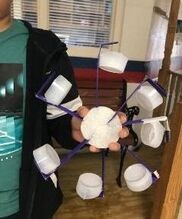 Creative Thinking²
Innovative Thinking³
Equity⁴
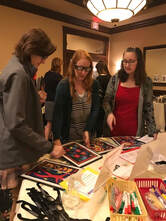 In response to COVID and the Collaborative’s focus on diversity, the Collaborative is growing its National Endowment for the Arts-funded national online teacher professional development for 2020-21. A number of K-12 teachers completed the first iteration of this professional development in the spring semester, 2020. Due to COVID, all experiences for teachers and students were virtual. Teachers who completed the course commented on the effectiveness of the course and its strategies, lessons, and examples. Since all their experiences were entirely virtual, they will be able to return to the course in 2020-21 and apply the lessons and the Collaborative’s research-validated assessments in their in-person classrooms with students. They will be joined by teachers who were not able to complete the course in spring, 2020, in addition to teachers whom the Collaborative is recruiting for this opportunity. This includes teachers of color and teachers of diverse students who are being recruited. For those teachers who are new to this K-12 online professional development in academic year 2020-21, there will be an an additional focus on culturally responsive teaching (CRT). Many STEAM strategies strongly dovetail with CRT strategies. This year, the project will look at effective strategies for integrating CRT with the online STEAM teacher professional development. (Please see Culturally Responsive Teaching and Collaborative K-12 STEAM Effective Practices in this newsletter.) The State Education Agency Directors of Arts Education (SEADAE) recently published a white paper that offers an in-depth look at STEAM from the K-12 perspective. Funded by the National Endowment for the Arts, this effort engaged state arts education directors, along with Collaborative Executive Director Lucinda Presley and Strategic Advisor Jonathan Katz. Also included were leaders of the California Arts Project and Young Audiences Arts for Learning.
This white paper points out that by effectively integrating STEAM instruction into their classrooms, educators can help prepare today’s students to address global challenges needing creative and innovative thinking. It looks at effective pedagogy, learner and teacher empowerment, assessment and evaluation, STEAM sustainability, and implications for research. It is a valuable resource for educators in all disciplines. You can find the white paper at: https://www.nationalartsstandards.org/sites/default/files/SEADAE-STEAM-WHITEPAPER-2020.pdf What should artistic and cultural leaders aspire to exemplify and accomplish in a time of crisis? Innovation Collaborative Strategic Planning Advisor Jonathan Katz published a series of four blogs on the Americans for the Arts website entitled Leadership Success in a Crisis Environment. They are intended to stimulate dialog about characteristics desirable in leaders during crises, the ways effective crisis managers think, the special needs and opportunities for leadership during crises, and the management principles that prove most valuable during crises. Jonathan welcomes feedback as well as forums for discussion of the ideas.
 By: Diversity Committee Chair Amanda Upton Editor’s Note: Since its inception, the Collaborative has worked to address the needs of diverse students and teachers. In 2019, its Diversity Committee launched an even more focused initiative to address these needs. The Collaborative’s Diversity Committee has been actively engaging with diverse education leaders, which, in turn, have provided the Collaborative with valuable insights regarding STEAM and equity, bringing a richer perspective to our work. By strengthening the Collaborative’s membership with expert diverse perspectives and including experts in various disciplines, Historically Black Colleges and Universities (HBCUs), and diverse audiences, we continue to gain greater insight. These unique perspectives help ensure we are more effective, with the highest standards, and are addressing the needs of the diverse populations. This work aligns with our mission of fostering transdisciplinary learning through creativity, innovation, and equity in teaching and learning. To that end, we are excited to welcome, as part of the Collaborative, administrators and educators who are working with us to enrich our work with diverse populations. Lillian Poats, PhD, Professor, College of Education, Texas Southern University, an HBCU, is currently engaging in our K-12 classroom and teacher professional development. Bernell Peltier-Glaze, PhD, Interim Dean and Professor, College of Education, Texas Southern University, is providing culturally responsive teaching for all teachers in the Collaborative’s National Endowment for the Arts-funded national online teacher professional development and is assisting with the Collaborative’s out-of-school time project. Dr. Poats and Dr. Peltier-Glaze are both involving Texas Southern University’s current and past student teachers in our teacher professional development initiatives. Sharon Delesbore, PhD, who is a Fort Bend (TX) Independent School District (HISD) middle school administrator and president of the Association for Multicultural Science Education (AMSE), is working on the Collaborative’s Strategic Plan Committee and has provided valuable insight with her expertise on equity and diversity and how the Collaborative can best frame the Strategic Plan in an inclusive manner. Florentia Spires, STEM Instructional Leader in Prince George’s County Public Schools (MD) and the National Science Teaching Association’s (NSTA) District III (DE, DC, and MD) Director, has joined the Collaborative’s K-12 Effective Practices Committee. The Collaborative also has two award-winning diverse science educators, Richard Embrick, from the Houston, Texas area, and Melissa Collins from Memphis, Tennessee. In our out-of-school time initiative, we are pleased to welcome Jasmine Sadler, an aerospace engineer, mathematician, and dancer, who leads the STEAM Collaborative in San Diego, CA. All of these educators bring personal and professional perspectives that are enriching the Collaborative’s work in a manner that can only be brought to the table by their life experiences. We welcome them and look forward to continuous engagement with their expertise. 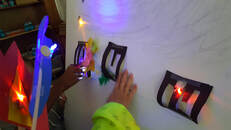 There are many innovative programs across the country that are integrating the arts with STEM. Below are some very engaging examples that were funded by the National Science Foundation (NSF). Embodied Physics See how dance centers in Boston, MA, collaborated with TERC, MIT, and the Woods Hole Oceanographic Institution to provide embodied learning for African American and Latino students. This project included the youth working with physicists, choreographers, and educators to demonstrate their science learning and make it relevant to their lives. About the Project and NSF Project Description. Theatre and STEM Learn how science educators, youth development experts, and learning science educators from Boston College partnered with Watertown Children’s’ Theatre in Boston, MA, to develop plays based on relevant scientific themes. This study looked at how the youths’ science identity was affected by this project. NSF Project Description Tech and Puppetry Discover how to use puppet-making and performance to teach prototyping skills. These easy lessons are made available through a project partnering Atlanta’s Center for Puppetry Arts and Georgia Tech researchers. The practitioners showed how everyday electronics can be integrated with personal expression. About the Project and NSF Project Description  Transfer, in the education world, is where competencies, skills, practices, processes, and/or content from one discipline can be applied to another discipline or context. It is an important issue to consider as we work to give today’s students vital creative (novel idea) and innovative (applying the novel idea) thinking skills for academic success and strong workforce preparation. The concept of mutual transfer among disciplines underpins the Collaborative’s goals of promoting creative and innovative thinking for K-12 and out-of-school-time students by focusing on disciplinary practices, processes, and competencies as students learn the required content. The Collaborative’s arts Research Thought Leader, Rob Horowitz, Ed.D. (See “Meet Research Thought Leader” article in this newsletter.) has done significant research on the concept of transfer, having explored this concept for over 20 years. He and his colleagues have developed a strong transfer model that has received significant recognition, including its dissemination by Arts Education Partnership (AEP), the national arts organization that supports arts practice through research and policy. This model is found in Dr. Horowitz’ work, “Learning in and Through the Arts: The Question of Transfer” (https://scinapse.io/papers/2119313428 and https://www.aep-arts.org/wp-content/uploads/Champions-of-Change_The-Impact-of-Arts-on-Learning.pdf). It looks at the issue of transfer more broadly and deeply than before. It points to competencies acquired in arts learning that are applicable in other subjects and to life in general. The arts content and skills, Dr. Horowitz says, though important in their own rights, can provide these pathways for transfer. The compentencies in this transfer model are cognitive development, social development, and personal development. Cognitive competencies include creative thinking skills such as fluency, originality, imagination, and elaboration, in addition to focused perception. These, then, facilitate the ability to change perspectives, express ideas, and create meaning. The social/emotional competencies include the abilties to collaborate, communicate, and empathize. The personal, or affective, learning competencies include risk-taking, persistence, self-confidence, and the student’s ownership of his/her learning. All of these, he points out, can be carried over to other disciplines and contexts. As examples of this transfer in action, he points to the long history of science where famous scientists worked across disciplines. This includes the naturalist John James Audubon, who used art as a way to understand and record his scientific observations of birds, and Leonardo daVinci, who used art to understand scientific phenomena, including dissections of the human anatomy, and to conceptualize his engineering designs. These men transferred art skills and competencies into scientific fields to promote their own understanding and to communicate meaning. As important as the transfer of arts competencies to other disciplines is, he says, it is important to note that transfer of practices or competencies also can be conveyed from other disciplines to the arts. His study on transfer went beyond the concepts from the 1980s and 1990s that saw transfer as unidirectional from the arts to enhance learning in other subjects, such as arts enhancing test scores. It noted that skills engendered in other disciplines, such as creativity and critical and divergent thinking, can transfer back to enhance arts learning. This can be promoted, he points out, by shared ways of thinking between disciplines so that transfer then could be multidirectional, interactive, and dynamic. The implications from this research, he points out, resonate strongly with the Collaborative’s work. The Collaborative’s research has documented the importance of transdisciplinary learning where students integrate different disciplines’ practices, competencies, and content interdependently and simultaneously, seeing that one discipline cannot complete the task without the other. This, in turn, contributes to a deeper understanding of each discipline to achieve an overarching synthesis. This synthesis can help solve problems, explain phenomena, create a product, and more. “It’s important that educators think about these relationships and move out of our silos,” he points out, to provide our students even richer and more valuable educational opportunities. An example of this transdisciplinary learning where different disciplines’ practices, competencies, and content are multidirectional, interactive, and dynamic occurred with 95 second grade underserved rural students (see image). They were given the problem of using the Elements of Art to invent a 3D wheel that could navigate Mars’ sandy and rocky surface. Through initial hands-on experiences integrating both disciplines, they combined their grade-level science concepts of texture, mass, rolling, and spinning with art concepts of line, shape, texture, and form (related to mass). They also integrated disciplinary practices such as (science) observing, asking questions, experimenting, developing a solution, testing, evaluating, using data to develop a conclusion, and (art) creating, presenting, responding, and connecting. They then used these science and art concepts to design and make their invention and write a team presentation that would show how well their invention solved the problem. One two-person student team creatively thought of their wheel having feet with magnets on them to “stick” to Mars’s magnetic soil that is high in iron oxide. They also added scoops to the wheel to scoop up the soil to test it. In their experiences, they didn’t separate the disciplines’ concepts and practices by thinking “I’m doing art now” or “I’m doing science now”. Their inventing process transcended each of the disciplines, driven by a strong synthesis that was richer than each individual discipline and that solved their problem, like in a real-world scenario. In the process, the students used many of the cognitive, social, and personal competencies outlined in Dr. Horowitz’ model. Assessments showed strong student integration skills and understanding of content. An increase in creative thinking was evident in 89% of the students. In addition, 100% of the teachers believed these experiences developed students’ critical thinking skills. One teacher said, “This enhanced my students because the kids got to use their own creative thinking and it brought them joy and they found a purpose they’ve never had before”. This is evidence of an important takeaway from Dr. Horowitz’ study on transfer. He emphasizes that, while it is important that competencies engendered by arts learning can transfer from the arts to other subjects, it also is important to understand that important competencies used in a variety of other disciplines and can transfer back to the arts, and then go back and forth, with no one discipline having priority over another. This way, the strength of each discipline can flow to enhance other disciplines, and, ultimately, students’ learning and thinking for the present and for their futures. 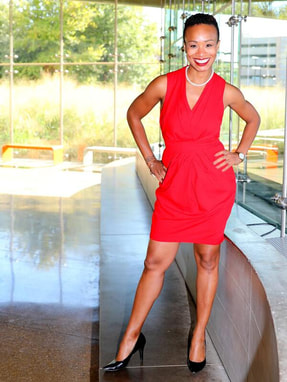 Collaborative member Jasmine Sadler is one of 120 women of color across the US that are working scientists who are being honored with a full-size statue in the If/Then exhibit sponsored by Lyda Hill Philanthropies. The exhibit was inspired by a study showing that fewer than six statues of women exist in the main parks or downtowns of the 10 top American cities, in addition to San Francisco, CA, and Washington, D.C. In this exhibit, more women statues will be assembled in one location than ever before. The exhibit was scheduled to open May 1 in Dallas, TX NorthPark Center, but the opening has been rescheduled due to COVID. Ms. Sadler, who is a rocket engineer and a classical ballerina, also has an MBA. She is CEO of the STEAM Collaborative in San Diego, CA. She says, ”I am so grateful to be among the more than 120 Women Ambassadors in Science. This opportunity has shown girls all over the world that there are women who look just like them that are great problem solvers with style. I am so proud to say we are doing our part to expand the mindset of all people. This includes myself because I now have multiplied by 10 the number of PhD STEM Women in my network!” She also pointed out that, through this work, she will be an ambassador for STEAM. She is an integral part of the Collaborative’s out-of-school-time STEAM initiative and the strategic planning committee. Find out more about Jasmine and this exhibition at: http://wise.nautil.us/feature/607/3-d-printed-statues-in-central-park-shine-a-light-on-women-scientists?mc_cid=52cd39af09&mc_eid=c1418e8265  By Juliana Texley, Innovation Collaborative Board Member and former President, National Science Teachers Association It often takes a major event to upset the status quo and for real change to occur. The U.S. Department of Education issued its first Star Schools grants to improve and evaluate online education in 2000. While the potential of online systems was clear twenty years ago, very little innovation occurred in the pedagogy until this year. In March 2020, schools across the nation were suddenly shut down and teachers had to adopt new methods almost overnight. Educators across the globe reached for skills and methods that they never thought they would need. Best practice couldn’t simply involve readings and worksheets or lectures via Zoom. Innovation happened! For this issue of the Innovation newsletter, we surveyed to find suggestions and links for a program near you. Talk Isn’t Cheap At the most basic level, nurturing innovation online begins with communication skills. That original Department of Education study twenty years ago emphasized two important elements of online interactions—open collaboration and creativity. Those elements are being reintroduced today in the best programs. One of the key ideas that teachers then and now recognize is summarized by Sharon O’Malley¹. Online discussions should be between students, not teachers and individual learners, she points out. What seems logical is, in truth, a tremendous challenge when a teacher moves from face-to-face to asynchronous online dialogue. Learning to “stop talking” online was one of the first changes teachers had to make as the transition occurred. Spatial Reasoning A second key principle of good online learning also included in O’Malley’s review, the intersection of science and the arts, is often spatial reasoning and how it is a skill that is both innate and learned. The online environment can be just as effective in discovering, manipulating, and developing spatial reasoning skills. Deborah Kris² shows that very specific methods can be incorporated to decrease gender gaps as well. Incorporating spatial reasoning tests, games, and building experiences into standard online courses can bring them to a level that could not be achieved in any other way. Unfortunately, it is awkward to incorporate spatial learning, art, and graphical analysis in many traditional online learning platforms. Therefore, the teacher may find it necessary to juggle not one but several learning management systems simultaneously. While these platforms may not be compatible, in the past several months teachers across multiple subject areas have demonstrated it is possible to deliver effective instruction through these strategies. Great Examples from the Arts and Physical Education Students today find online arts a motivational dimension of their shared experience. But it is still rare to see these skills woven into the fabric of science and social studies courses online. This is partially true due to the limited imagination of the programmers who develop the platforms. They might remember education as it was when they were students themselves, but they haven’t necessarily considered sites and apps that can be adapted for blended learning. When teachers make the effort, innovation enriches the at-home experience. Here are just a few examples of innovative resources:
______________________________ 1. O’Malley, Sharon. (2017). Effective Teaching Online. https://www.insidehighered.com/digital-learning/article/2017/07/12/7-guidelines-effective-teaching-online 2. Kris, Deborah Farmer. (2015). Can Teaching Spatial Skills Help Bridge the STEM Gender Gap? https://www.kqed.org/mindshift/43802/can-teaching-spatial-skills-help-bridge-the-stem-gender-gap The Collaborative, with the leadership of its diverse members, is making culturally responsive teaching a focus of the 2020-21 iteration of its current National Endowment for the Arts - funded national online teacher professional development.
What is culturally responsive teaching (CRT)? Bernnell Peltier-Glaze, Ed.D, Interim Dean of the College of Education at Texas Southern University, an HBCU (Historically Black College and University), an expert in CRT who teaches CRT at the college level, and who is leading this work for the Collaborative, provides an important look at this important teaching strategy. She points out that Dr. Gloria Ladson-Billings (1994) defines culturally responsive teaching as a pedagogy that empowers students intellectually, socially, and emotionally by using cultural references to provide students with knowledge, skills, and attitudes. What are its benefits? Using a culturally responsive approach, Dr. Peltier-Glaze says, teachers can appreciate each student as an individual informed by his/her background. CRT also helps bridge cultural gaps between teachers and their students. By adapting classroom instruction that overcomes these potential barriers, research shows that teachers can help students overcome obstacles and succeed. How do CRT strategies align with STEAM? Recent Collaborative K-12 Effective Practices research showed that by using Collaborative STEAM lessons and strategies, students of color performed the same as white students. This is called “closing the gap”, which means that students of color performed as effectively or more effectively than white students in STEAM learning and thinking. Interestingly, many of the strategies that make STEAM effective also are those that are used in culturally responsive teaching. These include:
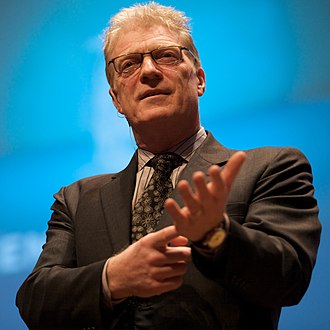 WORLD-FAMOUS EDUCATION INNOVATOR Sir Ken Robinson, known to many for his insistence that education foster creativity in our students in order to address the workforce need for innovation, died in August, 2020. His views, which can be found in a number of his books and talks, underpins the Collaborative’s work. He emphasized that, with technological advances and globalization, we are in a social and economic revolution like the 19th century Industrial Revolution. This calls for, he said, unlocking each person’s creativity abilities and, what’s more, creativity is not limited to the arts; it is a function of intelligence that can manifest whenever our intelligence is engaged. He adds that creativity flourishes especially where ideas flow among different disciplines. His 2006 TED talk on schools and creativity remains the most-watched TED talk, with 67.8 million views as of this writing. It has been translated into 62 languages. Find out more about Sir Ken, his books, and how to watch the TED talk on creativity and schools in the accompanying article. By Neve Spicer, Chief Editor @ WeTheParents.org
WeTheParents is a judgment-free parenting resource that advocates for simplicity and humor in family life. Written by parents for parents, WTP supports mothers, fathers, and guardians at all stages of their child-rearing journey. If there's one thing that parents and educators can agree on wholeheartedly, it's that a well-rounded curriculum serves students best. There seems to be a universal agreement that children should have the opportunity to engage with math, science, language, history, and geography in their learning, but subjects like visual art, music, and theater tend to receive far less emphasis. Unfortunately, in some schools and curricula, both time and funding for arts education are circling the drain. Scientific studies have associated arts education with some of the same long-term benefits as STEM learning, including critical thinking, enhanced ability to collaborate, and improved self-view; in fact, this barely scratches the surface of what science has determined arts education offers children. See We The Parent's "51 Benefits of Arts Education for Kids" infographic. Some important information:
 By Merrie Koester, Ph.D, Collaborative Advisory Council member and Science Teacher Educator and STEAM Curriculum Specialist, University of South Carolina, Center for Science Education I am a science educator, practicing visual artist, and novelist who has, for three decades, worked to link the complementary universes of science and art as ways of more fully knowing the world. My pedagogy – these days called STEAM - centers on the artful making of ideas, performances, and artifacts that ideally lead to a sense of aesthetic transformation, joy, and empowerment. Each lesson I create and present is crafted as story, with classes feeling a lot like process drama and at times, even like improvisational theatre. As a science educator working with STEAM curriculum, I work mostly in Charleston-area Title 1 middle and high schools serving low income, historically marginalized populations. In 2016, I started paying close attention to ever- increasing numbers of flooding events, attributed to both sea level rise and the development of salt marsh wetlands. Using ArcGIS mapping software and NOAA’s Sea Level Rise Viewer, I was able to determine that multiple Title 1 middle schools – especially those built on filled and paved wetlands - would be under water with a six-foot storm surge from a hurricane. Here was a story set in the Anthropocene epoch, in which both the human and non-human world had become degraded at the same time. There was also a backstory of both social and environmental injustice. Here was a narrative, too, in which many middle and high school Next Generation Science Standards, especially the Science and Engineering Practices and Cross-Cutting Concepts, could be folded into a “plot”, featuring students in flooding schools as resources of knowledge and flood resilience for their communities. I mapped out a phenomenon-rich curriculum as a “hero’s quest”, whose “Road of Trials” would require the mastery and application of STEM knowledge/tools and the artful making of culturally responsive flooding hazard mitigation tools. Our story would be performed as participatory action research in the community with local experts and mentors. Without hesitation, city emergency management experts, cultural leaders, school officials, professional artists, our mayor, volunteer STEM experts, and higher education thought leaders from The Citadel STEM Center and the College of Charleston all stepped up as mentors. As a result, Kids Teaching Flood Resilience was born. Over the last four years, we have reached 450 students in low-income, flood-prone neighborhoods, provided capacity-building training for 41 teachers and administrators in 5 schools, and been recognized as a NOAA Weather Ready Ambassador program of excellence. The dramatic change in work- and lifestyle caused by our response to COVID has given us new perspective on technology. Most of this quarter’s best professional development is online. This format challenges us to find new ways to share what we learn. Here are some options to begin your exploration of digital teaching resources that provide opportunities for STEAM teaching and learning. Take the time to read a blog Darice provides a succinct summary of ten diverse and interesting sites that show a variety of perspectives on STEAM. (Go to Blogs). One unique site from the Royal Society of Chemistry (Go to RSC) includes interesting activities to enhance our appreciation of the natural world. Go somewhere virtually! Take a virtual tour of a museum or gallery. The National Gallery of Art offers a walkthrough of fashions across the ages. The guide to the Chicago Field Museum is Sue, the famous T Rex. There are many other great galleries through which you can take a virtual stroll. These can be the core of great STEAM lessons (Go to Galleries). Explore a lesson
The popular hobby of model railroads involves the mathematics of quantity and scale, engineering, geography, and topography, as well as the sociology of public transportation. Underpinning the design challenge of trains is also the engineering of bridges, trestles, and tracks. A unique interdisciplinary approach to STEAM through model railroading is described in a model railroad blog: (Go to Model Railroad Blog). National Science Teachers Association (NSTA) offers design challenges for musical instruments (Go to Musical Instruments Design Challenge). It also offers challenges for “Design Bots” (Go to Design Bots Challenge). Attend virtual conferences Having withdrawal syndrome from the lack of in-person professional development? Virtual conferences are becoming more common, offering a rich variety of contacts: The U.S. Department of Education conducted a live briefing on STEAM in January, 2020. It can be seen here: (Go to U. S. Dept. of Education STEAM Briefing). (See a summary in the blog here). The presentation sparked some lively comments and criticisms. Review them here: (Go to Comments). OLC Innovate, a conference designed to challenge teaching and learning paradigms and reimagine learner experiences has been moved from July 21-24 in Chicago to an online format (Go to OLC Innovate). 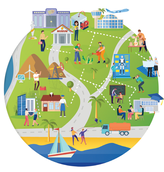 Christi Wilkins, Executive Director of Dramatic Results, Gabriel Gaete from the Long Beach, California, Public Library, and Andrew Watson, member of the Innovation Collaborative Board of Directors, led a panel presentation on developing community partnerships to a group of approximately 40 leading arts education administrators and advocates at the Arts Education Partnership’s annual convening in Fall, 2019. The presentation, Systemically STEAM: Tips for Forming a STEAM Ecosystems, discussed how organizations in Long Beach, California, and Fairfax, Virginia, leveraged cultural, economic, and educational institutions to support STEAM learning in their communities. Andrew shared how teachers built a grassroots STEAM movement in Northern Virginia and how they eventually built an ecosystem around an education hub. Christi and her teammate, Gabriel Gaete, discussed how they collaborated to build a Saturday and summer learning program to engage students who were gifted, but low-income. They also shared a STEAM Ecosystem Mapping Tool created with the help of Dr. Stacie Powers from Philiber Research and Evaluation to help other organizations build their own STEAM Ecosystems.
In January, 2020, the Innovation Collaborative and collaborative partner the Arts Education Partnership were invited to present on STEAM education at the U.S. Department of Education’s STEM Briefings. Mary Dell’Erba, Senior Project Manager at the Arts Education Partnership, presented on the policy landscape of STEAM education and what is happening in states and districts across the nation. Andrew Watson, Innovation Collaborative Board member, presented on how the arts support the goals of STEM, and how the Innovation Collaborative is supporting research into STEAM education. He also shared some highlights of student STEAM work. Afterwards, they were joined by Bonnie Carter, Group Leader of Arts in Education at the U.S. Department of Education, for questions from the audience.
The presentation can be seen at: https://edstream.ed.gov/webcast/Play/9243fb2144144203b977cae26a7a3f751d |
|||||||
